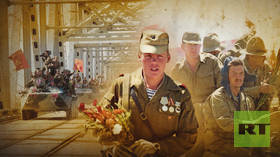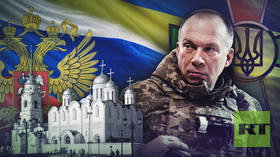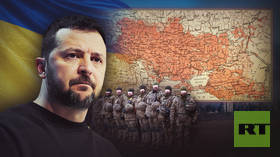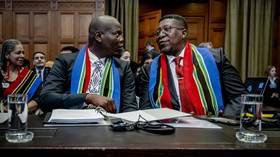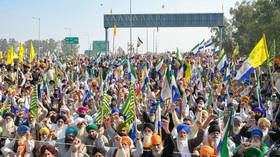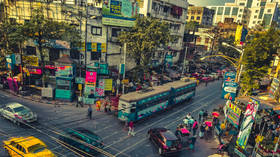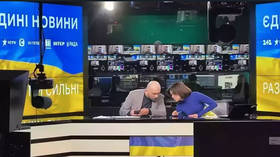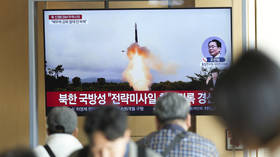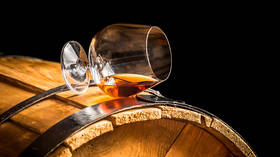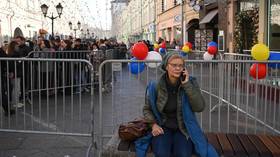Victory in Avdeevka: How Russia forced Ukraine to retreat from the most fortified city in Donbass

On Saturday, the Russian Ministry of Defense announced that Avdeevka – long an important stronghold of the Armed Forces of Ukraine (AFU) northwest of Donetsk city – had been liberated. The area had been seen as strategically vital as far back as 2014, when Kiev’s troops fought local Donbass separatists.
After the start of Russia’s military operation, in 2022, the situation near Avdeevka escalated again and, for the past two years, battles in the surrounds were ongoing.
The most recent encounter, which began on October 10, last year, and ended with the defeat of the Ukrainian garrison, involved additional Russian troops transferred from the Liman direction and commanded by Colonel-General Andrey Mordvichev.
The Ukrainian Army, which could not stop the Russian advance and wasn’t able to provide a permanent supply line for its garrison, hastily fled from Avdeevka, leaving behind about 850 prisoners, many bodies of its dead servicemen, and a lot of military equipment. The Ukrainians also had insufficient time to blow up high-rise buildings in the area, from which Russian troops can now obtain a clear view of the AFU’s future lines of defense. The number of Ukrainian troops killed during the battle and in the course of the withdrawal is currently unknown. According to Russian Defense Minister Sergey Shoigu, in the 24 hours prior to the capture of Avdeevka, the AFU lost more than 1,500 people.
The fact that Russian troops have successfully captured the city changes the operational situation in the Donetsk direction. In addition to reducing the number of potential Ukrainian attacks on Donetsk, Makeyevka, and Yasinovataya (since the front line has been pushed to the west and north), the liberation of Avdeevka will allow Russia to rebuild the Donetsk-Gorlovka highway as well as the major railway junction in Yasinovataya. Moreover, the AFU has been forced to retreat to new, less fortified positions.
Among other things, this victory has significantly boosted the morale of Donetsk residents, giving them hope that life can go back to normal and the artillery terror under which they have been living for many years may stop. To fully understand their joy, we must delve into history. So, if you don’t mind I will take only 30 seconds or one minute of your time to give you a brief historical background.
War in Donbass and the Minsk Agreements
Before the outbreak of the war in Donbass in 2014, Avdeevka was a typical industrial city. The Avdeevka Coke and Chemical Plant, located on the northern outskirts of Avdeevka (and later turned into a strongpoint by the AFU), used to be one of the major metallurgical facilities in Ukraine.
When civil war broke out, the city came under the control of the Donetsk People’s Republic (DPR). Avdeevka was strategically important, since it was located between Donetsk (the capital of the DPR) and Gorlovka – one of the largest cities controlled by the insurgents. Battles for Avdeevka broke out in July. However, the pro-Russian militia of Novorossiya were unable to maintain control over the city, and on July 28, Ukrainian forces occupied it and continued to advance in the direction of Yasinovataya.
The Minsk I Agreements – an effort to settle the internal conflict in Ukraine by means of diplomacy and with the aid of Russia, France, and Germany – stipulated that Avdeevka would remain under the control of Ukraine. It became the main stronghold of the AFU in this direction, along with the territory of the Donetsk airport and the village of Peski near Donetsk. According to the Minsk Agreements, Ukrainian forces had to withdraw from some of these territories to create a buffer zone. But the AFU did not want to lose this foothold, which it could use to attack Donetsk and other parts of the DPR with artillery fire.
This posed a considerable threat to the DPR. After the start of the second stage of hostilities in January-February 2015, its troops stormed the main buildings of Donetsk airport and unsuccessfully attempted to attack Peski and Avdeevka. At this time, the Donetsk military first found out about the “Zenit” stronghold – a former Soviet air defense base which had once been equipped for a global confrontation between NATO and the Warsaw Pact. The Ukrainian garrison which was positioned there discovered that a militia column was advancing from the village of Spartak towards the Khimik microdistrict in Avdeevka (later known as “Fortress,” this was the area of multi-story residential buildings, while the rest of the city mainly consisted of industrial buildings and private houses) and thwarted the attack.
In the winter of 2015, DPR armed forces failed to liberate Avdeevka, and the line of contact was “frozen,” which led to bloody positional warfare during the “truce.” The proximity of the city to strategically important sites such as the Donetsk-Gorlovka road and the “Yasinovataya fork” created constant tension between the conflicting parties. In 2016-2017, heated battles broke out for control over the Butovka mine ventilation shaft, and the “Almazy” and “Promka” (Avdeevka industrial zone) strongholds.
In the winter of 2017, the escalation near Avdeevka almost led to the renewal of active hostilities. However, the guarantors of the Minsk Agreements helped settle the situation at the time. The front line was stabilized until 2022, and the number of ceasefire violations declined. Despite the stalemate, Ukraine could consider it a victory, since it had both retained control over Avdeevka (except for a small section of “Promka,” which remained under the control of DPR forces), and blocked the route between Donetsk and Gorlovka.
Ukraine also controlled the local filtration plant, which purified water for the residents of the Donetsk urban area. Kiev’s forces resorted to blackmail and restricted personnel that lived in the DPR from accessing the plant. As a result, the International Committee of the Red Cross (ICRC) had to assume the role of an intermediary in this humanitarian crisis.
The beginning of Russia’s offensive and the first stage of the battle for Avdeevka
After Russia recognized the Donbass republics and launched its military operation in 2022, it pulled most of its forces to the southern section of the front – to Volnovakha and Mariupol. Although this led to a major strategic success for Moscow, which established the so-called “land corridor to the Crimea,” the AFU used this time to strengthen its defenses (during the Minsk Agreements, Ukraine deployed its troops along the front line) in the Donetsk region. As a result, Russian troops were not able to capture Avdeevka right away.
In March, the first stage of the battle for Avdeevka began – Moscow’s forces broke through the Ukrainian defense east of the city. Later, this territory became known as the northern flank of the encirclement and eventually helped the Russian Army to win. On March 23, the village of Verkhnetoretskoye was liberated. In May, the villages of Troitskoye, Novoselovka, and Novoselovka II, and part of the village of Novobakhmutovka also came under the control of the DPR.
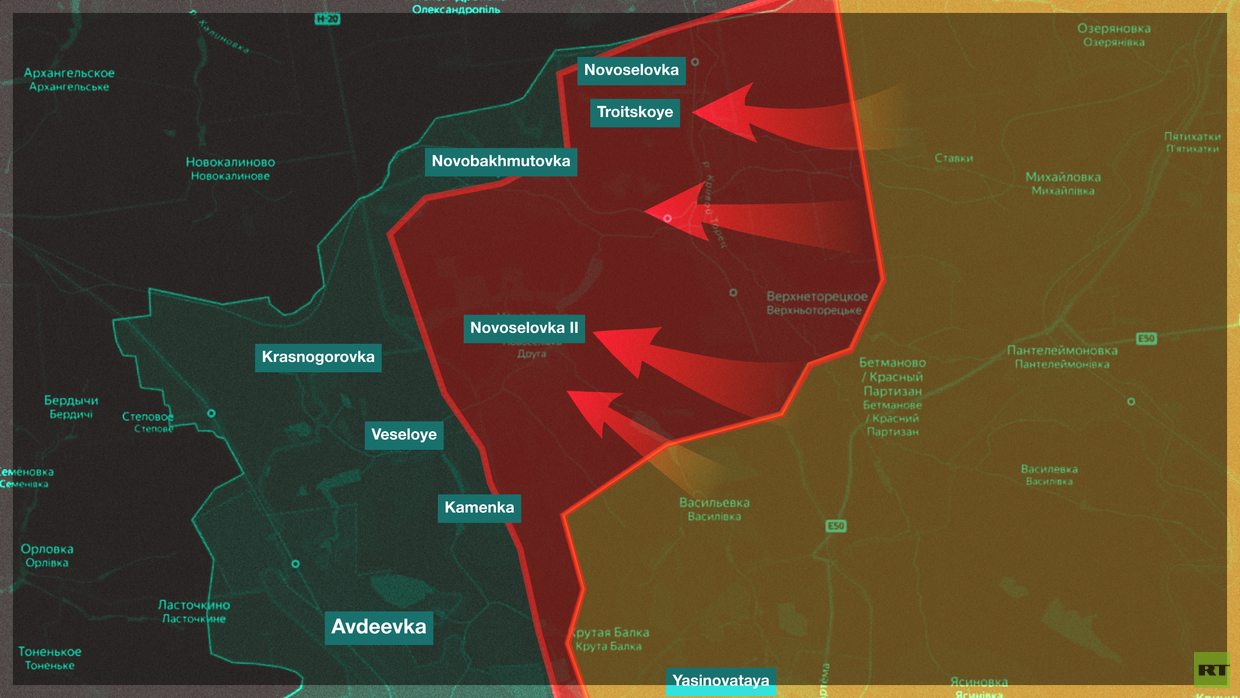
In June, the troops were not able to advance further since units of the People’s Militia of the DPR (including those positioned near Avdeevka) were moved to reinforce the group that fought against the Ukrainian garrison in the Lysychansk-Severodonetsk area of the neighboring Lugansk People’s Republic (LPR). On July 3, 2022, Lisichansk was liberated by Russian troops, and units of the Donetsk 1st Army Corps returned to the DPR and began preparing for the second stage of the battle.
The army achieved an important victory in the LPR, but the fact that it had to withdraw from Avdeevka for almost two months allowed the AFU to strengthen its garrison. However, Russian troops were able to occupy several villages and improve the security situation around Yasinovataya.
The second stage of the battle: The southern flank
In July 2022, Russia launched an offensive on the western outskirts of Donetsk: Avdeevka, Peski, Nevelskoye, and Maryinka. This can be considered the second stage of the battle for Avdeevka. The battles were fierce and became associated with the trench warfare of World War I, when each kilometer seized from the enemy was celebrated.
This time, forces were mostly concentrated southwest of Avdeevka, while activity on the northeastern flank served as a deceptive maneuver. Russian troops promptly occupied the ventilation shaft of the Butovka mine, but then ran into Ukrainian positions along the Donetsk Ring Road and in the “Zenit” fortified area.
Russian troops also launched an offensive around Donetsk airport, which allowed them to control part of its territory. These positions were known as “Anthills” and were located near the villages of Vodianoye and Opytnoye. The entire territory of the Donetsk airport was seized by Russian troops in November 2022.
Thirdly, battles for the village of Peski, located between the city of Donetsk and the Donetsk Ring Road, went on for about a month. Peski was strategically important, since Ukraine could have used it as a bridgehead to attack Donetsk, and it also “covered up” Kiev’s defensive positions. This frontline village – where Donetsk’s upper-middle-class residents once built “dachas” [country houses] – was almost completely abandoned and militarized since fighting started there in 2014.
After the liberation of Peski and the capture of the Ukrainian stronghold known as “The Bridge Republic,” Russian troops crossed the Donetsk Ring Road and entered the eastern outskirts of the neighboring village of Pervomaiske. However, battles for Pervomaiskoye, which continue to this day, are not directly related to the battle for Avdeevka, apart from deceptive measures taken to distract the enemy.
Having reached the Donetsk Ring Road, the Russian Army continued to advance north, towards the villages of Vodianoye and Opytnoye. By this time, it faced a shortage of ammunition and Russian aviation did not yet have a sufficient number of adjustable aerial bombs. The offensive got stuck and proceeded quite slowly. However, on November 15, troops captured Opytnoye and on December 14, 2022, the eastern, or “main” part of Vodianoye also came under Russian control (battles for control over the western part of the village – i.e. one street that stretches over several kilometers – continue to this day).
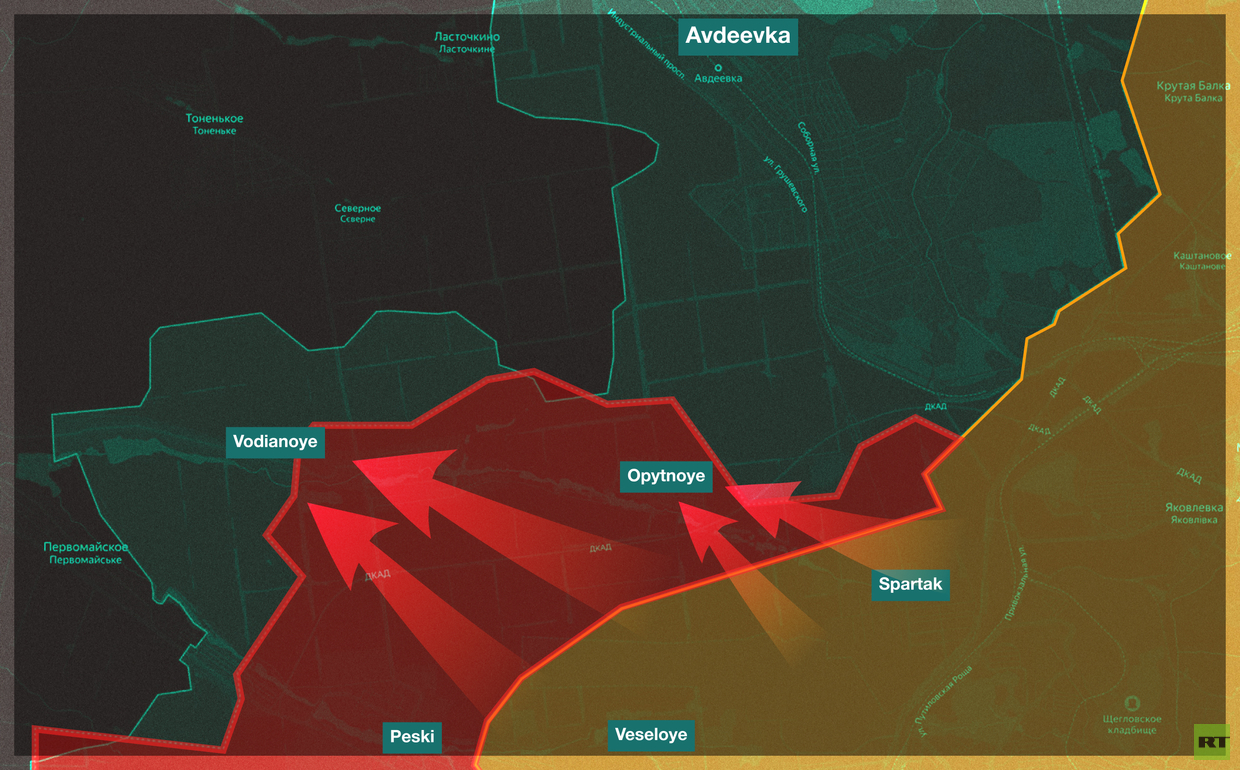
Throughout this time, the Ukrainian Army continued to attack Donetsk, and caused many civilian deaths. Some of these strikes were carried out from the territory near Avdeevka. By this time, the Russian authorities had repeatedly stated that one of the goals of the military operation was to protect the people of Donbass – and this would have been impossible without pushing the Ukrainian artillery away from Donetsk city.
Having achieved some progress on the southwestern flank, the units of the 1st Army Corps had exhausted their offensive potential (for reasons that included the shortage of ammunition) and reduced the intensity of assault operations. Over the following year, the Russian Armed Forces expanded their area of control by about two kilometers north and west of the Vodianoye-Opytnoye line, but ran into the AFU’s defense positions, located between Vodianoye-Opytnoye and the village of Tonenkoe.
The third stage of the battle: The northern flank, spring 2023
Early 2023 was a nervous time for both sides. Ukraine lost control over Soledar, and the AFU’s position in Artemovsk [Bakhmut] didn’t look good. At that time, it was the scene of the most heated battles. Military observers were closely watching the situation and both sides focused on supplying their armies in that area. As for Russia, it was engaged in the construction of defense lines in the south and in the LPR, and was set on defeating Ukrainian reserves in the “Bakhmut meat grinder.”
In order to create another “hotspot” and distract the AFU from Artemovsk, the Russian Army made another attempt to attack Avdeevka at the end of February 2023. This time, the focus shifted to the northeastern flank.
By April, the Russians had captured the village of Novobakhmutovka, and constructed their defense opposite the Novgorodsky urban settlement (known in Ukraine as New York), along the railway line positioned on the heights. This was done in case the AFU tried to counterattack from the north and oust the Russians.
Russian troops also crossed the Donetsk-Konstantinovka highway, first capturing the villages of Veseloye and Krasnogorovka, and then Kamenka. Further progress was impossible at the time due to the start of the AFU’s offensive near Artemovsk, and then in the area of Rabotino and on the Vremyevsky salient. The focus of the Russian army had again shifted to other directions.

The fourth stage of the battle: An attempt to encircle Avdeevka
After the failure of Ukraine’s counteroffensive in the summer of 2023, the Russian command again turned its attention to Avdeevka. In addition to the strategic value of this city, the partially encircled positions of the Ukrainian troops resembled the situation in Artemovsk, a city which Kiev had tried to hold on to for as long as it could, and where it had lost many soldiers.
For this purpose, the 2nd and 41st Combined Arms Armies of the Central Military District were transferred from the Liman direction to Avdeevka as reinforcements. Colonel-General Mordvichev, who was involved in storming Mariupol and commanded the 8th Combined Arms Army, which included the 1st Army Corps that stormed Avdeevka, was in charge of the operation. For Ukraine, this transfer of troops came as a surprise. Military expert Konstantin Mashovets, who is affiliated with Ukraine’s Main Directorate of Intelligence, wrote:
“The enemy continues to transfer units of the 2nd Combined Arms Armies from the Liman direction. As far as I understand, the enemy is masking the movement [of the troops] with a lot of disinformation. If you try to determine their location based exclusively on open source [data], it looks like they are in several places at once.”
The newly arrived units reinforced the northern flank, but left the southwestern flank in a relatively weak condition. The first target was a massive slag dump created by the Avdeevka Coke and Chemical Plant (ACCP), located between the plant and Krasnogorovka. This was a man-made elevation, and tactically, Russian troops had to take it over in order to move westward. In the course of several assaults, it was seized on October 19.
Moscow’s forces then moved onto the Avdeevka-Ocheretino railway line, where the AFU took up defensive positions. Battles there continued throughout the fall, and the Ukrainians began transferring reserves to this site, including the Bradley 47th Mechanized Brigade, which was previously involved in the offensive in Zaporozhye Region.
The AFU was not able to hold its positions along the railway line, and the Russian Armed Forces fought for control over the village of Petrovskoye (Stepnoye), where they got stuck. As of February 18, Peterovskoye has not been captured. Progress in that direction has been complicated by the fact the AFU installed cameras and radio repeaters on the buildings and pipes of the Avdeevka Coke Plant and used it as an invincible stronghold.
Unable to capture Petrovskoye, the Russian Army continued to advance along the railway to the northwest, in the direction of Ocheretino, coming within four kilometers of it. As a result, Ocheretino ceased to be a rear supply base for the Avdeevka garrison.
At the same time, in order to divert the attention of the Ukrainian troops, which were concentrated north of the chemical plant, the Russian Army attacked the opposite side of Avdeevka. Their goal was to capture the “Promka” fortified area – a conglomerate of industrial buildings between Avdeevka and Yasinovataya, which had been separated by the front line during the Minsk Agreements. The AFU constructed a major stronghold there, but since Ukrainian troops were focused on defending their positions on the other side of the city, they had lost this stronghold by November 25.
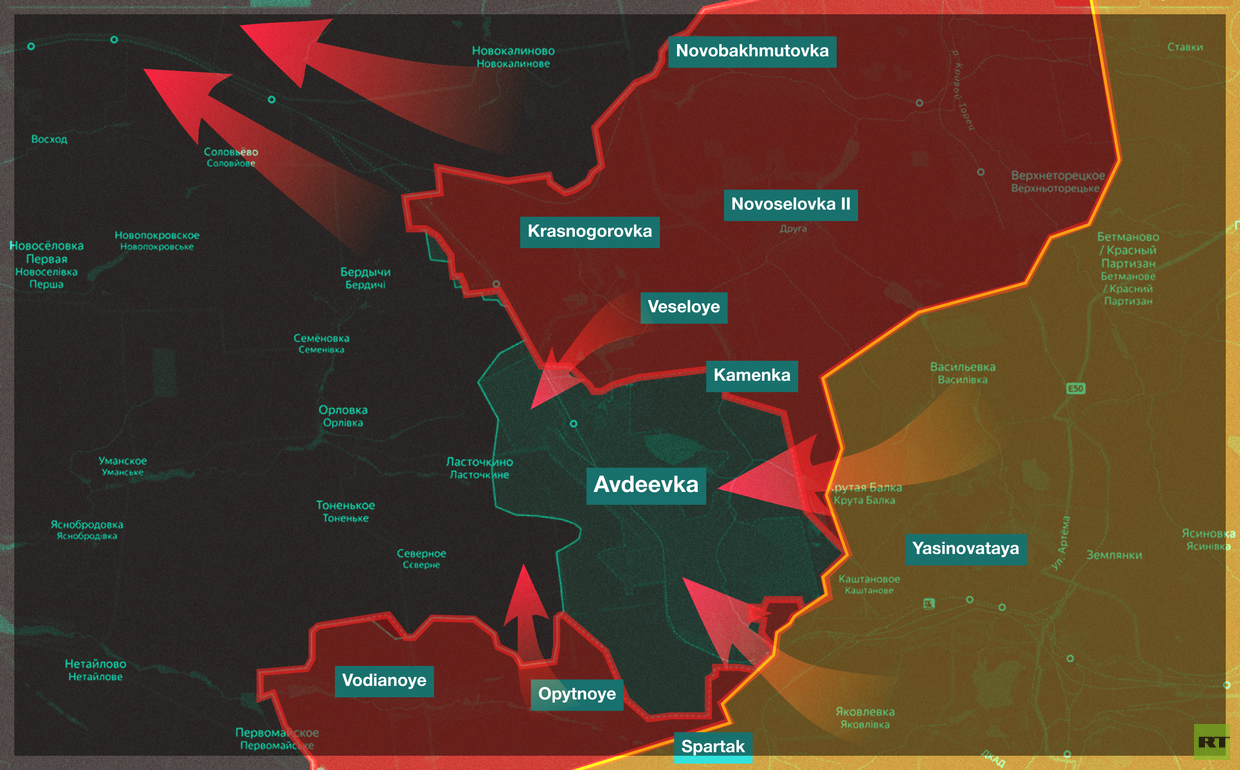
Until January 2024, Russian troops attempted to advance in the areas of Petrovskoye and Ocheretino but could not achieve the desired result and the operation was delayed. It was time to find a new solution.
The final stage of the battle
By early 2024, the Ukrainian Army had successfully prevented several Russian attempts to outflank Avdeevka, encircle it, and cut off all supply routes. However, the Ukrainian troops positioned within the city grew weaker, since they had fewer supply routes and suffered losses as a result of Russian artillery, aviation and drone attacks, and assault operations.
The Russian command continued to press forward near Petrovskoye, and also turned its attention to the area of the sewage treatment plants between Krasnogorovka and Avdeevka. The low-rise private houses in this area allowed the AFU to set up defense positions in practically every one of them, but also provided cover for Russian stormtroopers, which didn’t have to move through bare fields. Battles in this area started in December, and eventually became fatal for the Ukrainian garrison.
Advancing along the sewage treatment plants, the Russian Army entered the northern part of the city, where the only major fortification was the Avdeevka chemical plant. Russian troops then launched an assault operation in the direction of the former cafe “Brevno” [”Log”] located at the entrance to Avdeevka, along the only paved road over which the AFU still had control. This maneuver forced the Ukrainian garrison to remain in the main (residential) part of the city and cut it off from the chemical plant which served both as a fortification structure and the rear of the Ukrainian garrison.
While Russian stormtroopers slowly advanced in the north, they also launched another attack from the south, this time on the Ukrainian position called “Tsarskaya Okhota” [”Royal hunt”]. During a daring operation on January 21, Russian stormtroopers made their way through an underground network of pipes, got to the rear of the “Royal Hunt” position, and seized it. They also entered the residential part of the city, establishing control over part of Sobornaya, Sportivnaya, and Chernyshevsky streets. As a result of this attack, a number of important Ukrainian positions southwest of Avdeevka (including “Zenit”) were cut off from supplies.
The Ukrainian troops counterattacked, and tried to push the Russians out. They even involved a group from the 47th Mechanized Brigade, equipped with Bradley fighting vehicles. However, this battle was not decisive for either side: the Russian Armed Forces were not able to advance further, and the Armed Forces of Ukraine were unable to push the Russians out. Meanwhile, for the Ukrainian garrison, the situation became worse.
Finally, on February 2, Ukrainian FPV drone pilots posted a video which showed the advance of Russian troops near the sewage treatment plants – the Russians had practically entered the northern part of the city. Summing up the results on February 4, Ukrainian analysts from DeepState drew attention to Avdeevka, ironically comparing the situation with the selection of a Ukrainian candidate for the Eurovision Song Contest: “In Avdeevka, death is conducting its own selection process.”
The next day, they also stated: “Despite certain official statements, the situation in the city continues to get worse. Today, the f***ers literally climbed out of all the cracks. The Katsaps [a derogatory Ukrainian term for Russians] are focusing on securing their positions and getting more personnel into Staraya Avdeevka and a settlement near the Avdeevka Coke and Chemical Plant.”
On February 7, the situation became critical for the Ukrainian garrison – Russian troops were within a kilometer of their main supply route. Ukrainian analysts described the situation in Avdeevka as “chaotic.”
At this time, the Ukrainian command, which did not want to withdraw from the city, sent the elite 3rd Separate Assault Brigade to Avdeevka in the hope of counter-attacking Russian troops and pushing them away from the line of communication. Incidentally, the weather conditions were very favorable for the withdrawal of the garrison because there was fog in the area. However, despite the fighting inside the city and the decisive advance of the Russian troops, the Ukrainian command still didn’t order the army to retreat.
Commanders of the 3rd Separate Assault Brigade, however, were not eager to participate in heavy urban battles, in the course of which Russian aviation was known to drop a record number of aerial bombs per day. So the brigade’s chief of staff proposed an alternative plan on his social media page – a flanking strike from Novgorodskoye (New York). However, the high command ignored these proposals – which looked unrealistic since Ukraine’s defensive positions in the city had collapsed – and the 3rd Separate Assault Brigade, positioned along both flanks of the Russian wedge, tried to stabilize the front. However, due to several factors, including the understaffing of some newly formed battalions (a captured officer of one of the new battalions said he had been transferred to the 3rd Brigade only a few weeks earlier and there were only 14 people in his company), the units of the brigade got surrounded by Russian troops.
By this time, the Russian Armed Forces entered the industrial area on Industrialny Prospekt, and later occupied the “Log” position and launched an offensive on the settlement of Lastochkino, outside Avdeevka. As a result, they cut off the Ukrainian garrison from access to the only paved supply route. At the same time, battles for the “Zenit,” “Cheburashka,” and “Vinogradniki-2” positions started on the southern flank. The Ukrainian garrison was drenched in blood, but still did not receive an order to retreat.
Finally, on February 17, the commander of the Tavria operational-strategic group, Brigadier General Tarnavsky, and the newly appointed commander-in-chief of the AFU Colonel-General Syrsky recognized that the blockade could not be lifted and ordered the army to withdraw from Avdeevka.
Future prospects
The liberation of Avdeevka will reduce the AFU’s potential to attack Donetsk, Yasinovataya, and Makeyevka using barrel artillery. However, in order to guarantee the safety of civilians in these areas, the front must be pushed even further away from these cities, since the AFU has long-range MLRS systems.
At an operational level, after the necessary repairs are made, the Donetsk-Gorlovka highway will likely be used again. Also, the region’s major railway junction in Yasinovataya will now be better protected from attacks. In fact, if the front moves even further west, Russia will be able to unblock the important Donetsk railway hub and improve its logistics.
Moreover, the Ukrainians did not have time to blow up the multi-story residential buildings and the buildings of the Avdeevka Chemical Plant, and now, as dominating heights, they may be used to monitor the positions of the AFU up to 15km west of the city.
Moreover, many doubts arise regarding the “prepared positions” where the AFU have retreated. As of February 18, Russian troops are fighting for the village of Lastochkino, which is west of Avdeevka, and most likely it will soon come under Russian control.
In general, the terrain allows defensive positions to be set up either along the Durnaya beam – about 5km from Avdeevka, or along the Volchya River, which is about 15km from the city.
Conclusion
On February 17, the Russian Army won an important battle in a city where a lot of blood has been shed. The number of servicemen killed in the most recent battle is unknown, and likewise, we do not yet know how many Ukrainian soldiers have been captured.
According to the preliminary information, Russian soldiers found many war trophies in Avdeevka, which (like the surviving multi-story buildings) were left behind due to the hasty withdrawal of the AFU.
We also do not know how many residents of Avdeevka have survived the battles in the city. People are currently being evacuated and help is being provided to them. As a rule, civilians who refuse to evacuate and remain in the cities captured by the Russian Army hold pro-Russian views. However, considering the damage to their hometown, they will most likely have to leave it and start a new life elsewhere.
The people of Donbass are treating the liberation of Avdeevka with reverential respect – for them, it now has an almost sacred meaning. The residents of the region show visitors the former fortified areas “Zenit,” “Royal hunt,” and “Promka” – names that have been familiar to them for ten long years.

